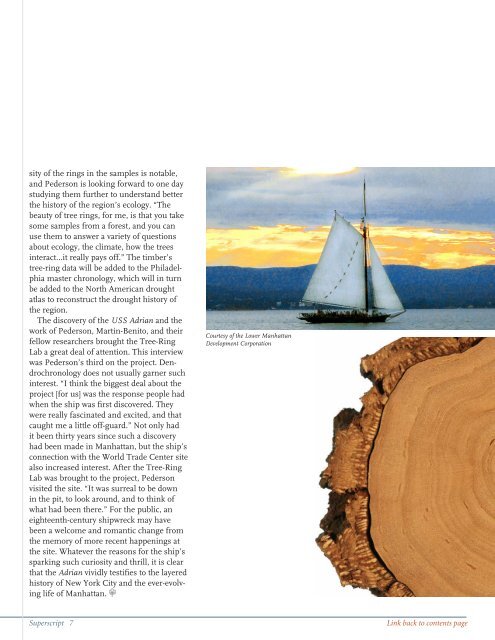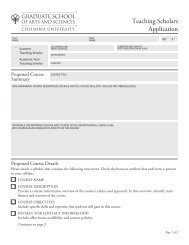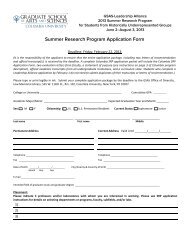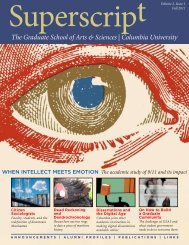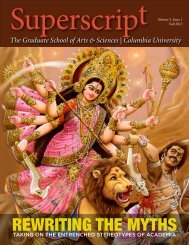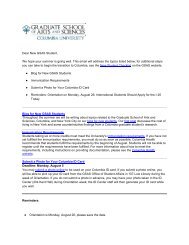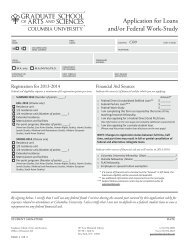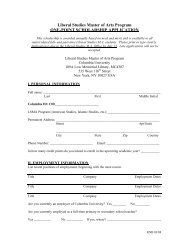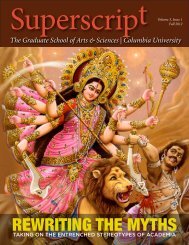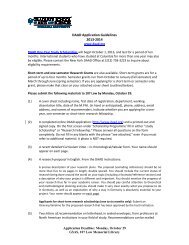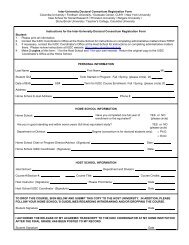Martin-Benito, Courtesy <strong>of</strong> the LowerManhattan Development CorporationIt was clear the wood <strong>of</strong>the ship came from thePhiladelphia/centralNew Jersey region, <strong>and</strong>there<strong>for</strong>e, most likelyfrom the same <strong>for</strong>est.They had discovered theplace; next came thequestion <strong>of</strong> time.Link back to contents pageindividual differences. Trees are like people.Each has a different personality, <strong>and</strong> whilethey respond differently to changes in theenvironment they have the same generalresponse…If you starve a group <strong>of</strong> peoplethey get grouchy but by varying degrees.”Each sample from the Adrian <strong>of</strong>fered a“barcode <strong>of</strong> tree rings that floated in time,”Martin-Benito describes. First the team hadto make a master chronology <strong>of</strong> the ship,then compare it to the oak masters fromNorth American regions. “It’s such a powerfultechnique, <strong>and</strong> in a way so simple. Yousee the rings, you see the growth, <strong>and</strong> youcan gather so much in<strong>for</strong>mation about atime when no one was measuring anything,when there were no <strong>for</strong>est records at all.”The lab’s oak chronologies were from themid-Hudson Valley, central New Jersey,<strong>and</strong> northern New Jersey, among other areas.Looking back on the project, Pedersonis unsure exactly why, beyond instinct orhappenstance, they began with the Philadelphiamaster chronology. But when theymatched the chronologies, the Adrian’s patterns“started to lock in beautifully.” It wasclear the wood <strong>of</strong> the ship came from thePhiladelphia/central New Jersey region, <strong>and</strong>there<strong>for</strong>e, most likely from the same <strong>for</strong>est.They had discovered the place; next camethe question <strong>of</strong> time.No sample <strong>of</strong> wood from a ship is perfect<strong>for</strong> dating. The timber has been carved,shaped, <strong>and</strong> manipulated <strong>for</strong> construction,losing the important outer ring that marksa tree’s final year. To complicate matters,the Adrian had slowly deteriorated over thecourse <strong>of</strong> its time underground, further rottingaway rings. A few <strong>of</strong> the samples, however,were convexly curved, showing a portion<strong>of</strong> sub wood, the last set <strong>of</strong> functionalrings in a tree. Thus, the only rings missingfrom these samples were the last few. Withthis evidence, Martin-Benito <strong>and</strong> Pedersonwere confident they could date the woodwithin a range <strong>of</strong> a few years. The last ring<strong>of</strong> the samples was <strong>for</strong>med in 1773, so theAdrian’s timber was harvested in the early1770s <strong>and</strong> the ship was likely built within ayear or two <strong>of</strong> that date. The Tree-Ring Labsent its report to AKRF <strong>and</strong> the in<strong>for</strong>mationwas added to the conclusions <strong>of</strong> othersworking to flesh out the ship’s history.The lab’s dating supported the findings <strong>of</strong>the maritime historian studying the Adrian.The ship appeared to be constructed in away that was, as Pederson was told, like “ajigsaw puzzle, less sophisticated or industrializedthan one would find in a ship built ina major urban shipyard.” The construction<strong>of</strong> the ship was consistent with rural methods,like those used in smaller shipyardsin central New Jersey. Its rural associationcorroborated the lab’s findings that the timbercame from one <strong>for</strong>est. Pathologists alsostudied evidence such as the shipwormsin the remains to determine what the shipwas used <strong>for</strong> <strong>and</strong> where it traveled. Initialfindings pointed to the ship being used <strong>for</strong>trade, possibly along the eastern seaboard<strong>and</strong> in the Caribbean. The recent discoverythis summer <strong>of</strong> the vessel’s bow, however,has led to another theory: that the ship wasa British troop carrier. The USS Adrianwas taken to the Maryl<strong>and</strong> ArchaeologicalConservation Laboratory in St. Leonard <strong>for</strong>preservation <strong>and</strong> is now housed at the Center<strong>for</strong> Maritime Archaeology <strong>and</strong> Conservationat Texas A&M. She will continue to bestudied, adding to our underst<strong>and</strong>ing <strong>of</strong> thebeginnings <strong>of</strong> commerce <strong>and</strong> transport inAmerica.The future <strong>of</strong> the samples at the Tree-Ring Lab will also be productive. The den-6 Superscript
sity <strong>of</strong> the rings in the samples is notable,<strong>and</strong> Pederson is looking <strong>for</strong>ward to one daystudying them further to underst<strong>and</strong> betterthe history <strong>of</strong> the region’s ecology. “Thebeauty <strong>of</strong> tree rings, <strong>for</strong> me, is that you takesome samples from a <strong>for</strong>est, <strong>and</strong> you canuse them to answer a variety <strong>of</strong> questionsabout ecology, the climate, how the treesinteract…it really pays <strong>of</strong>f.” The timber’stree-ring data will be added to the Philadelphiamaster chronology, which will in turnbe added to the North American droughtatlas to reconstruct the drought history <strong>of</strong>the region.The discovery <strong>of</strong> the USS Adrian <strong>and</strong> thework <strong>of</strong> Pederson, Martin-Benito, <strong>and</strong> theirfellow researchers brought the Tree-RingLab a great deal <strong>of</strong> attention. This interviewwas Pederson’s third on the project. Dendrochronologydoes not usually garner suchinterest. “I think the biggest deal about theproject [<strong>for</strong> us] was the response people hadwhen the ship was first discovered. Theywere really fascinated <strong>and</strong> excited, <strong>and</strong> thatcaught me a little <strong>of</strong>f-guard.” Not only hadit been thirty years since such a discoveryhad been made in Manhattan, but the ship’sconnection with the World Trade Center sitealso increased interest. After the Tree-RingLab was brought to the project, Pedersonvisited the site. “It was surreal to be downin the pit, to look around, <strong>and</strong> to think <strong>of</strong>what had been there.” For the public, aneighteenth-century shipwreck may havebeen a welcome <strong>and</strong> romantic change fromthe memory <strong>of</strong> more recent happenings atthe site. Whatever the reasons <strong>for</strong> the ship’ssparking such curiosity <strong>and</strong> thrill, it is clearthat the Adrian vividly testifies to the layeredhistory <strong>of</strong> New York City <strong>and</strong> the ever-evolvinglife <strong>of</strong> Manhattan.Courtesy <strong>of</strong> the Lower ManhattanDevelopment CorporationSuperscript 7Link back to contents page


